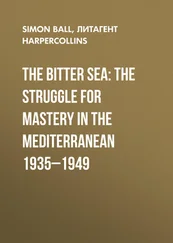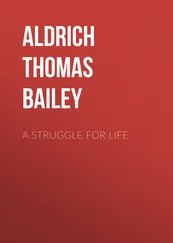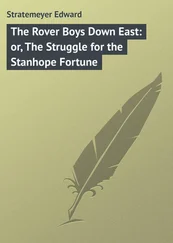Чарльз Дарвин - The Origin of Species by Means of Natural Selection Or, the Preservation of Favoured Races in the Struggle for Life
Здесь есть возможность читать онлайн «Чарльз Дарвин - The Origin of Species by Means of Natural Selection Or, the Preservation of Favoured Races in the Struggle for Life» весь текст электронной книги совершенно бесплатно (целиком полную версию без сокращений). В некоторых случаях можно слушать аудио, скачать через торрент в формате fb2 и присутствует краткое содержание. Год выпуска: 1999, Жанр: Биология, на английском языке. Описание произведения, (предисловие) а так же отзывы посетителей доступны на портале библиотеки ЛибКат.
- Название:The Origin of Species by Means of Natural Selection Or, the Preservation of Favoured Races in the Struggle for Life
- Автор:
- Жанр:
- Год:1999
- ISBN:нет данных
- Рейтинг книги:3 / 5. Голосов: 1
-
Избранное:Добавить в избранное
- Отзывы:
-
Ваша оценка:
- 60
- 1
- 2
- 3
- 4
- 5
The Origin of Species by Means of Natural Selection Or, the Preservation of Favoured Races in the Struggle for Life: краткое содержание, описание и аннотация
Предлагаем к чтению аннотацию, описание, краткое содержание или предисловие (зависит от того, что написал сам автор книги «The Origin of Species by Means of Natural Selection Or, the Preservation of Favoured Races in the Struggle for Life»). Если вы не нашли необходимую информацию о книге — напишите в комментариях, мы постараемся отыскать её.
The Origin of Species by Means of Natural Selection Or, the Preservation of Favoured Races in the Struggle for Life — читать онлайн бесплатно полную книгу (весь текст) целиком
Ниже представлен текст книги, разбитый по страницам. Система сохранения места последней прочитанной страницы, позволяет с удобством читать онлайн бесплатно книгу «The Origin of Species by Means of Natural Selection Or, the Preservation of Favoured Races in the Struggle for Life», без необходимости каждый раз заново искать на чём Вы остановились. Поставьте закладку, и сможете в любой момент перейти на страницу, на которой закончили чтение.
Интервал:
Закладка:
Even the wide interval between birds and reptiles has been shown by the naturalist just quoted to be partially bridged over in the most unexpected manner, on the one hand, by the ostrich and extinct Archeopteryx, and on the other hand by the Compsognathus, one of the Dinosaurians—that group which includes the most gigantic of all terrestrial reptiles. Turning to the Invertebrata, Barrande asserts, a higher authority could not be named, that he is every day taught that, although palaeozoic animals can certainly be classed under existing groups, yet that at this ancient period the groups were not so distinctly separated from each other as they now are.
Some writers have objected to any extinct species, or group of species, being considered as intermediate between any two living species, or groups of species. If by this term it is meant that an extinct form is directly intermediate in all its characters between two living forms or groups, the objection is probably valid. But in a natural classification many fossil species certainly stand between living species, and some extinct genera between living genera, even between genera belonging to distinct families. The most common case, especially with respect to very distinct groups, such as fish and reptiles, seems to be that, supposing them to be distinguished at the present day by a score of characters, the ancient members are separated by a somewhat lesser number of characters, so that the two groups formerly made a somewhat nearer approach to each other than they now do.
It is a common belief that the more ancient a form is, by so much the more it tends to connect by some of its characters groups now widely separated from each other. This remark no doubt must be restricted to those groups which have undergone much change in the course of geological ages; and it would be difficult to prove the truth of the proposition, for every now and then even a living animal, as the Lepidosiren, is discovered having affinities directed towards very distinct groups. Yet if we compare the older Reptiles and Batrachians, the older Fish, the older Cephalopods, and the eocene Mammals, with the recent members of the same classes, we must admit that there is truth in the remark.
Let us see how far these several facts and inferences accord with the theory of descent with modification. As the subject is somewhat complex, I must request the reader to turn to the diagram in the fourth chapter. We may suppose that the numbered letters in italics represent genera, and the dotted lines diverging from them the species in each genus. The diagram is much too simple, too few genera and too few species being given, but this is unimportant for us. The horizontal lines may represent successive geological formations, and all the forms beneath the uppermost line may be considered as extinct. The three existing genera, a14, q14, p14, will form a small family; b14 and f14, a closely allied family or subfamily; and o14, i14, m14, a third family. These three families, together with the many extinct genera on the several lines of descent diverging from the parent form (A) will form an order; for all will have inherited something in common from their ancient progenitor. On the principle of the continued tendency to divergence of character, which was formerly illustrated by this diagram, the more recent any form is the more it will generally differ from its ancient progenitor. Hence, we can understand the rule that the most ancient fossils differ most from existing forms. We must not, however, assume that divergence of character is a necessary contingency; it depends solely on the descendants from a species being thus enabled to seize on many and different places in the economy of nature. Therefore it is quite possible, as we have seen in the case of some Silurian forms, that a species might go on being slightly modified in relation to its slightly altered conditions of life, and yet retain throughout a vast period the same general characteristics. This is represented in the diagram by the letter F14.
All the many forms, extinct and recent, descended from (A), make, as before remarked, one order; and this order, from the continued effects of extinction and divergence of character, has become divided into several sub-families and families, some of which are supposed to have perished at different periods, and some to have endured to the present day.
By looking at the diagram we can see that if many of the extinct forms supposed to be embedded in the successive formations, were discovered at several points low down in the series, the three existing families on the uppermost line would be rendered less distinct from each other. If, for instance, the genera a1, a5, a10, f8, m3, m6, m9, were disinterred, these three families would be so closely linked together that they probably would have to be united into one great family, in nearly the same manner as has occurred with ruminants and certain pachyderms. Yet he who objected to consider as intermediate the extinct genera, which thus link together the living genera of three families, would be partly justified, for they are intermediate, not directly, but only by a long and circuitous course through many widely different forms. If many extinct forms were to be discovered above one of the middle horizontal lines or geological formations—for instance, above No. VI.—but none from beneath this line, then only two of the families (those on the left hand a14, etc., and b14, etc.) would have to be united into one; and there would remain two families which would be less distinct from each other than they were before the discovery of the fossils. So again, if the three families formed of eight genera (a14 to m14), on the uppermost line, be supposed to differ from each other by half-a-dozen important characters, then the families which existed at a period marked VI would certainly have differed from each other by a less number of characters; for they would at this early stage of descent have diverged in a less degree from their common progenitor. Thus it comes that ancient and extinct genera are often in a greater or less degree intermediate in character between their modified descendants, or between their collateral relations.
Under nature the process will be far more complicated than is represented in the diagram; for the groups will have been more numerous; they will have endured for extremely unequal lengths of time, and will have been modified in various degrees. As we possess only the last volume of the geological record, and that in a very broken condition, we have no right to expect, except in rare cases, to fill up the wide intervals in the natural system, and thus to unite distinct families or orders. All that we have a right to expect is, that those groups which have, within known geological periods, undergone much modification, should in the older formations make some slight approach to each other; so that the older members should differ less from each other in some of their characters than do the existing members of the same groups; and this by the concurrent evidence of our best palaeontologists is frequently the case.
Thus, on the theory of descent with modification, the main facts with respect to the mutual affinities of the extinct forms of life to each other and to living forms, are explained in a satisfactory manner. And they are wholly inexplicable on any other view.
On this same theory, it is evident that the fauna during any one great period in the earth's history will be intermediate in general character between that which preceded and that which succeeded it. Thus the species which lived at the sixth great stage of descent in the diagram are the modified offspring of those which lived at the fifth stage, and are the parents of those which became still more modified at the seventh stage; hence they could hardly fail to be nearly intermediate in character between the forms of life above and below. We must, however, allow for the entire extinction of some preceding forms, and in any one region for the immigration of new forms from other regions, and for a large amount of modification during the long and blank intervals between the successive formations. Subject to these allowances, the fauna of each geological period undoubtedly is intermediate in character, between the preceding and succeeding faunas. I need give only one instance, namely, the manner in which the fossils of the Devonian system, when this system was first discovered, were at once recognised by palaeontologists as intermediate in character between those of the overlying carboniferous and underlying Silurian systems. But each fauna is not necessarily exactly intermediate, as unequal intervals of time have elapsed between consecutive formations.
Читать дальшеИнтервал:
Закладка:
Похожие книги на «The Origin of Species by Means of Natural Selection Or, the Preservation of Favoured Races in the Struggle for Life»
Представляем Вашему вниманию похожие книги на «The Origin of Species by Means of Natural Selection Or, the Preservation of Favoured Races in the Struggle for Life» списком для выбора. Мы отобрали схожую по названию и смыслу литературу в надежде предоставить читателям больше вариантов отыскать новые, интересные, ещё непрочитанные произведения.
Обсуждение, отзывы о книге «The Origin of Species by Means of Natural Selection Or, the Preservation of Favoured Races in the Struggle for Life» и просто собственные мнения читателей. Оставьте ваши комментарии, напишите, что Вы думаете о произведении, его смысле или главных героях. Укажите что конкретно понравилось, а что нет, и почему Вы так считаете.












